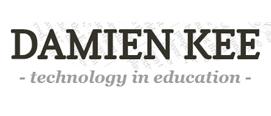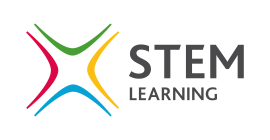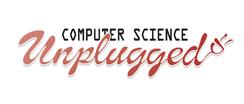GCSE Data and Data representation
It is important that students know how different forms of data are stored and interpreted by a computer. Whether the data in question is sensor data; statistics that have been gathered; audio data; video; photos or text, knowing how it is represented allows us to manipulate it in a whole host of ways.
These resources look at a variety of ways in which computers can aid the capturing of data from the real world. Once the data is captured the user can then move on to look at ways in which the data can then be manipulated.
Data representation
This lesson consists of a presentation on Data Representation, looking at how binary numbers work (and concludes with an exercise in converting binary numbers to denary). Students consider primitive monitors with q bit colour depth, represented characters and other data. before investigating how coloured images are stored, including a discussion of how colour depth affects the final output.
Data Representation -Data Compression
This resource, aimed at lower ability Key Stage 4 students, introduces the concept of data compression, specifically Run Length Encoding. Students are asked to use an online tool to convert names into binary (ASCII), this binary data is then subjected to Run Length Encoding and encoded binary compared to the original. Some modification of the resource may be useful.
Binary Data Representation
This resource looks at binary data and contains an Excel workbook with macros to enable recolouring/checking the colour of cells. A series of binary numbers are given in a rectangular grid of cells on the left when the workbook is first opened. Students are required to recolour the original binary grid, to show the hidden picture and can check their work as they progress. If using this resource macros will need to be enabled for the sheet to work.
Data representation Images
This resource consists of 2 A3 Active Learning worksheets which could be used to either introduce and record information about data representation, or as a revision tool. There are plenty of activities across the two pages that would allow students to either recap work they have previously covered or to research new topics using the internet.
Digital Images
This short homework or worksheet activity describes how a bitmapped image has been stored in a file, including the encodings used in binary to represent the 4 colours which make up the image, and the height and width of the image. The data is all given in binary format. Students are then expected to recreate the original image by decoding the file, and colouring the appropriate squares in a grid, in the correct colours.
Datalogging Activities for the Busy Teacher
This sample of a teacher guide shows how the Lego NXT programmable brick can be used with compatible sensors as a versatile data logging kit. It contains examples of data logging in the wider world to help students engage with the topic, and guidance for simple investigative activities that link to science, computing and engineering. including Measuring light and sound intensity , Testing reaction times and Coding and data transmission. For data logging using Lego NXT, the educational version of the Lego Mindstorms NXT 2.0 software is required. Also required are the programmable brick and a selection of sensors, as found in Lego NXT Education packs.
BBC micro:bit – bees and pollination
The BBC micro:bit is a great tool for carrying out surveys that involve quickly counting and recording one or two variables. Using the button inputs provides a simple interface to the device allowing, for instance, quick tallying of the numbers of two different types of bee around a plant. Other examples might include counting student responses to a two-variable question in the classroom, carrying out quadrat surveys, data related to fruit-fly experiments, and haemocytometer counts.
This resource includes background information on bees and other insects. It also includes prompts for setting suitable questions for field research, how to program the BBC micro:bit to use as a data collection tool, and how to analyse the resultant data to draw conclusions.
Card Flip Magic - Error Detection
When data is stored on a disk or transmitted from one computer to another, it is usually assumed that it doesn’t get changed in the process. But sometimes things go wrong and the data is changed accidentally. This activity uses a magic trick to show how to detect when data has been corrupted, and how to correct it. The resource begins by explaining how to perform the trick and suggestions as to how the trick can be taught to students. There are also extension activities. There follows a real-life example using ISBN numbers. To conclude there is more information about error detection followed by solutions and hints. This collection of twenty activities from Computer Science Unplugged is designed to aid the teaching and learning of computer science through engaging games and puzzles using cards, string, crayons and lots of running around.
Data representation and Binary Numbers
This resource contains a number of activities and worksheets to support the topic of binary numbers. The content looks first at binary numbers, how they represent denary numbers, converting between the two, binary addition and using two's complement to represent negative numbers and thus perform subtraction. These are supported by a number of worksheets containing questions on each topic. The resource also looks at ways to represent fractional numbers in binary using fixed point and various ways of encoding images, resolutions and colour depths. Finally there is a section on how audio is encoded/represented, this includes a worksheet with some suitable tasks. The original presentation was delivered as part of a CPD session, and so may need some modification before using with a class.
Data handling - stock control
This real-world example introduces students to using spreadsheets effectively to simplify data handling and perform calculations. Students are given data about stock levels and sales which they enter into a spreadsheet and create formula to perform certain calcuations. They create conditional formatting to highlight values that meet certain criteria.
Data Handling - Lorry value
This real-world example introduces students to using spreadsheets effectively to simplify data handling and perform calculations. Students are given data about the value of items in a lorry. They must then create a spreadsheet including formula to perform certain calculations and conditional formatting to highlight values that meet certain criteria.




